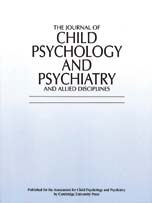Modelling the Training Effects of Kinaesthetic Acuity Measurement in Children
Published online by Cambridge University Press: 01 July 1998
Abstract
In previous papers (Sims, Henderson, Hulme, & Morton, 1996a; Sims, Henderson, Morton, & Hulme, 1996b) we have found that the motor skills of clumsy children are capable of significant improvement following relatively brief interventions. Most remarkably, this included a 10-minute intervention while testing the kinaesthetic acuity of the children using a staircase method (Pest). In this paper, we show that Pest testing improves the kinaesthetic acuity of normal children as well. We analyse the available data on the development and improvement of motor skills and kinaesthetic acuity and derive a causal model for the underlying skills. We show that at least three independent cognitive/biological components are required to account for the data. These three components are affected differently by the various interventions that have been tried. We deduce that improvement on a general test of motor impairment can be found as a result of training in kinaesthetic acuity or through other, independent factors.
Information
- Type
- Research Article
- Information
- The Journal of Child Psychology and Psychiatry and Allied Disciplines , Volume 39 , Issue 5 , July 1998 , pp. 731 - 746
- Copyright
- © 1998 Association for Child Psychology and Psychiatry
- 6
- Cited by

